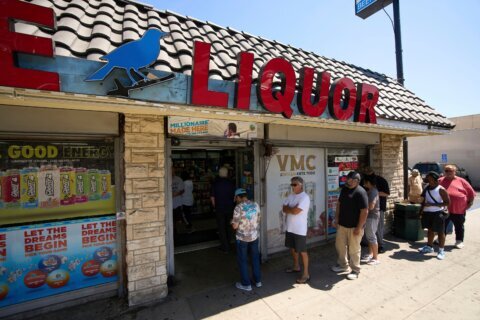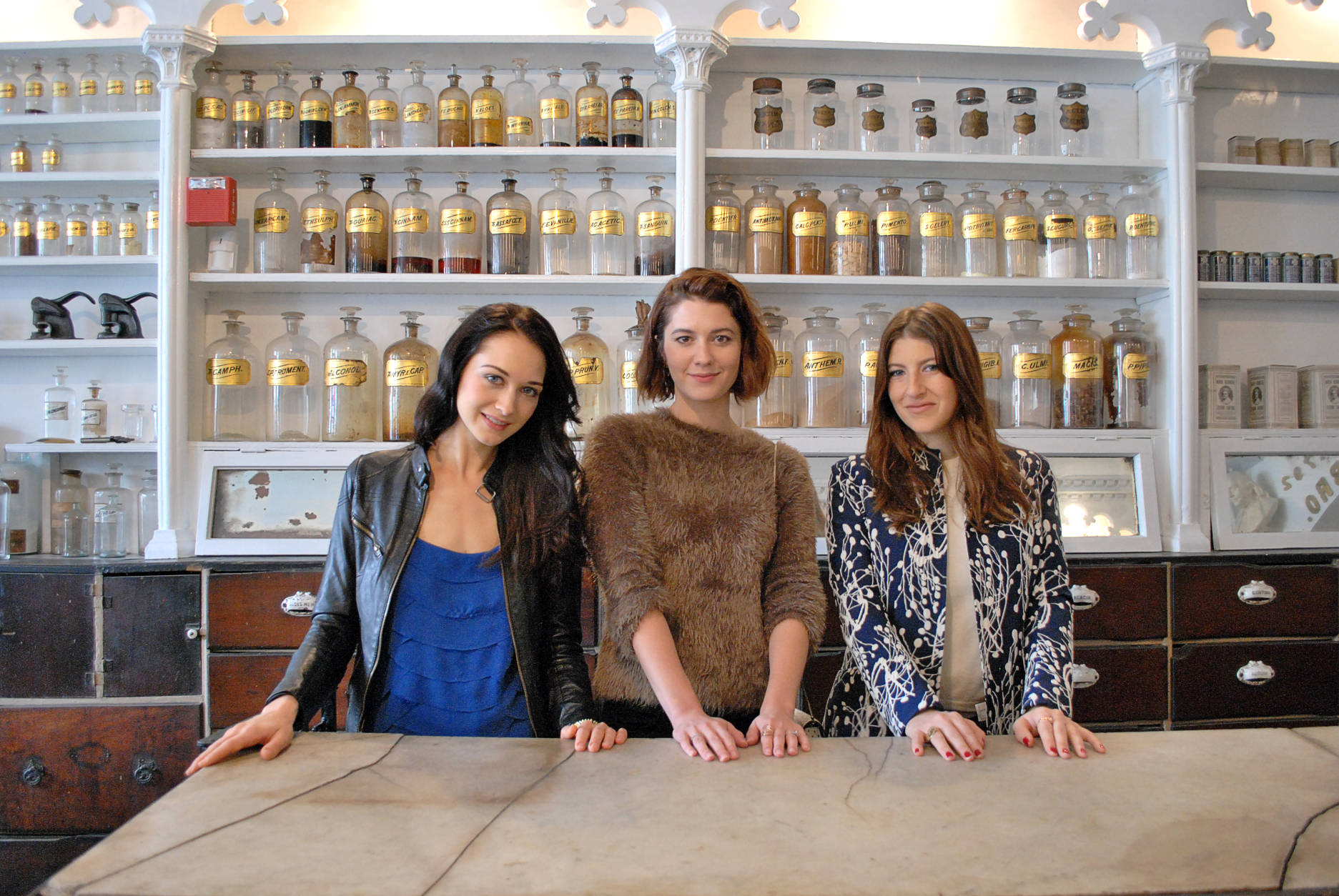
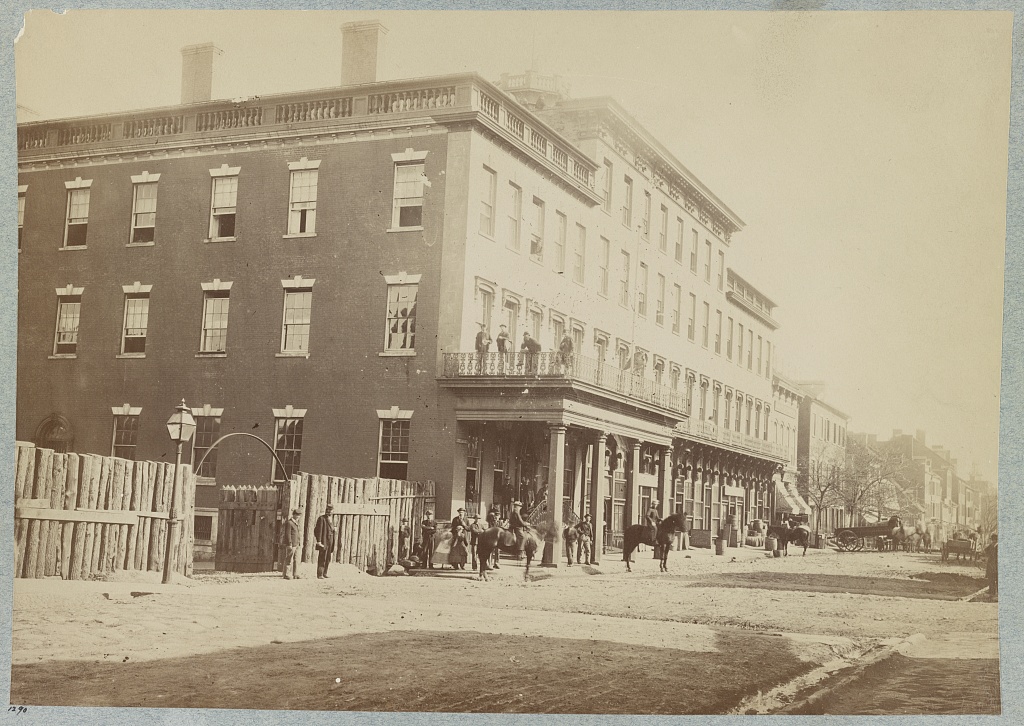
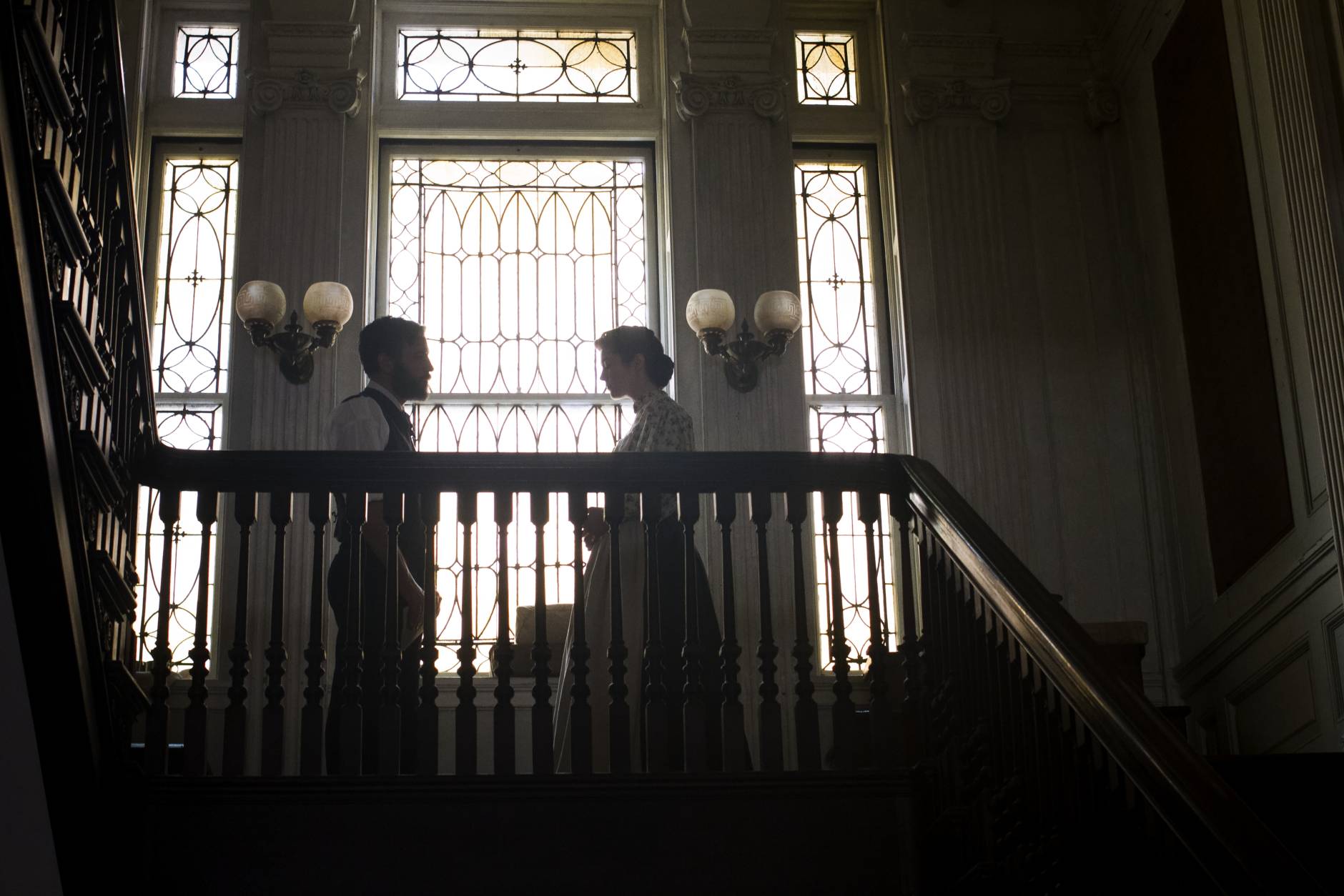
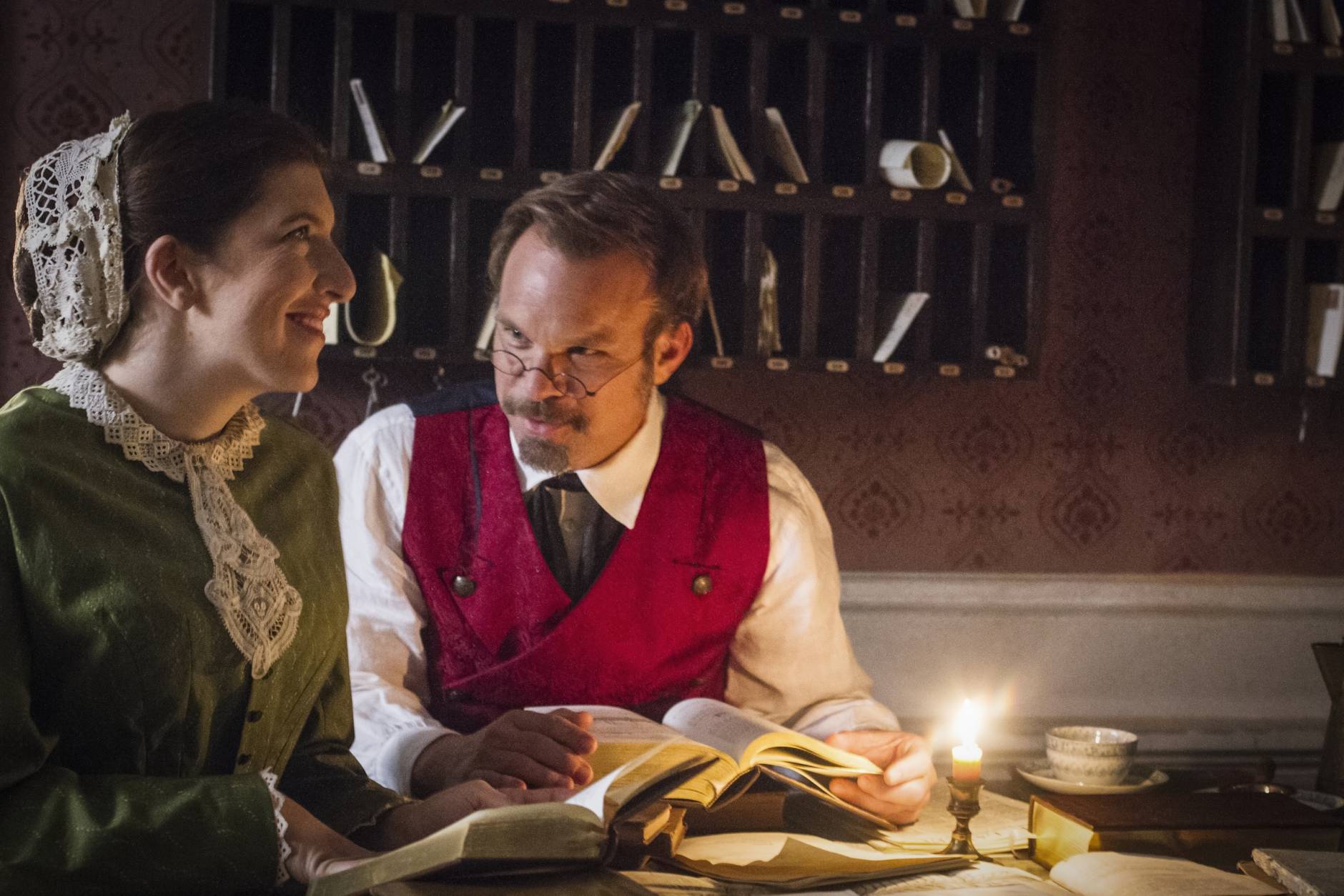
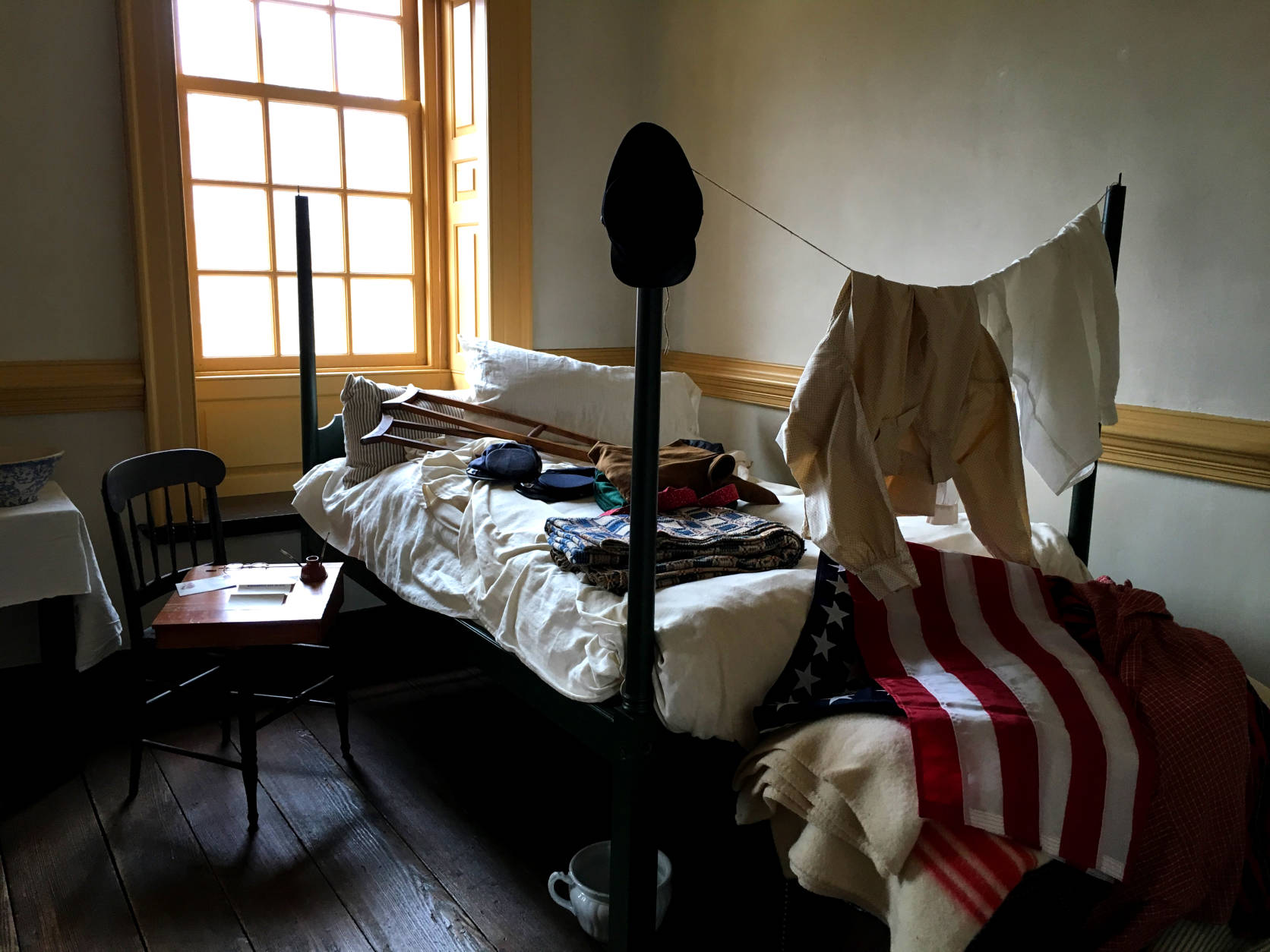
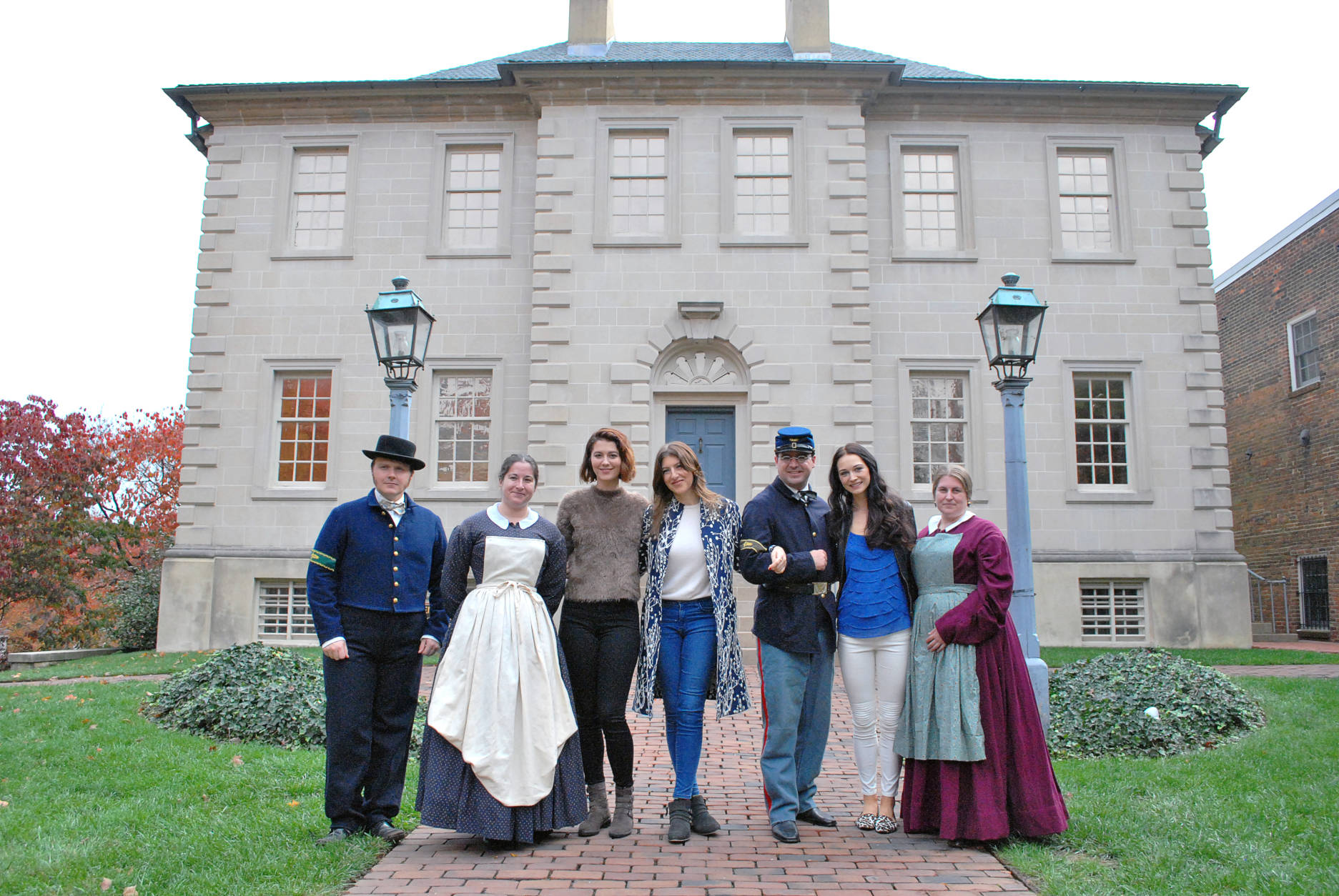
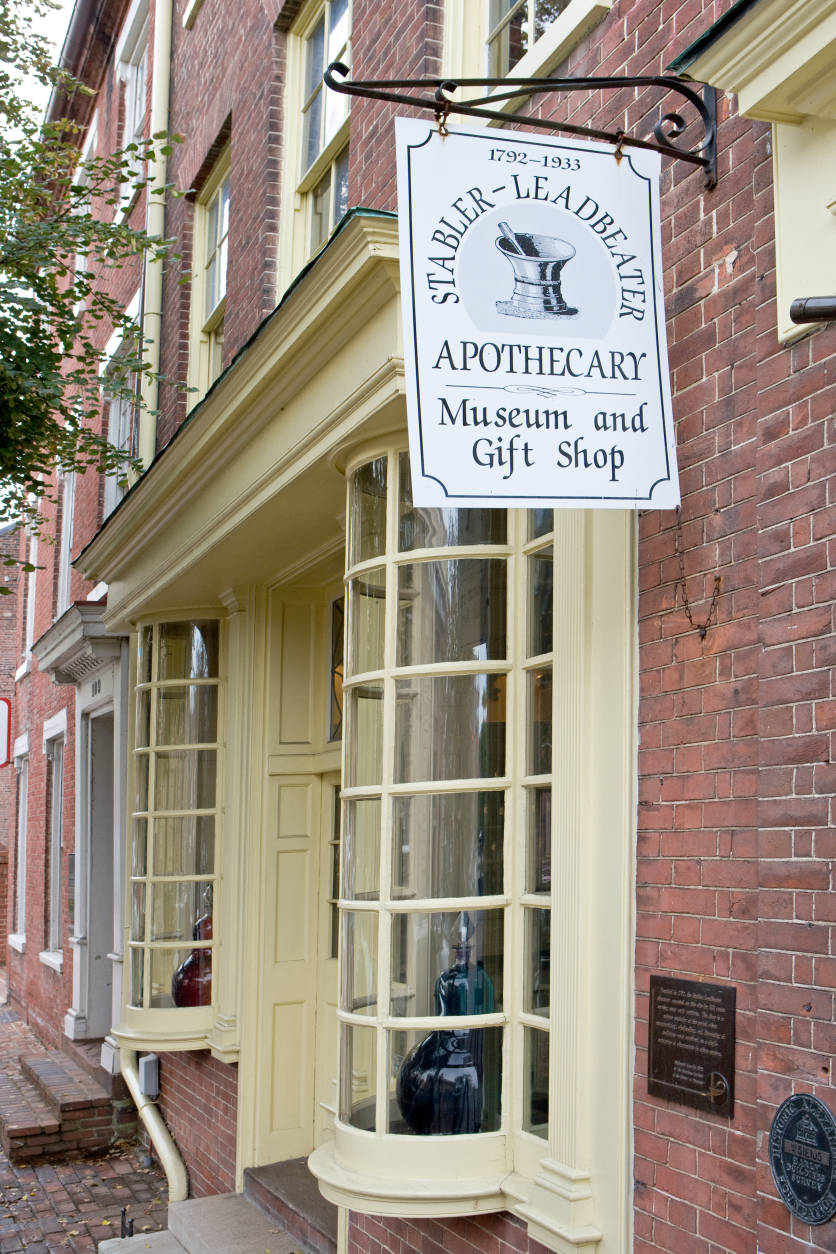

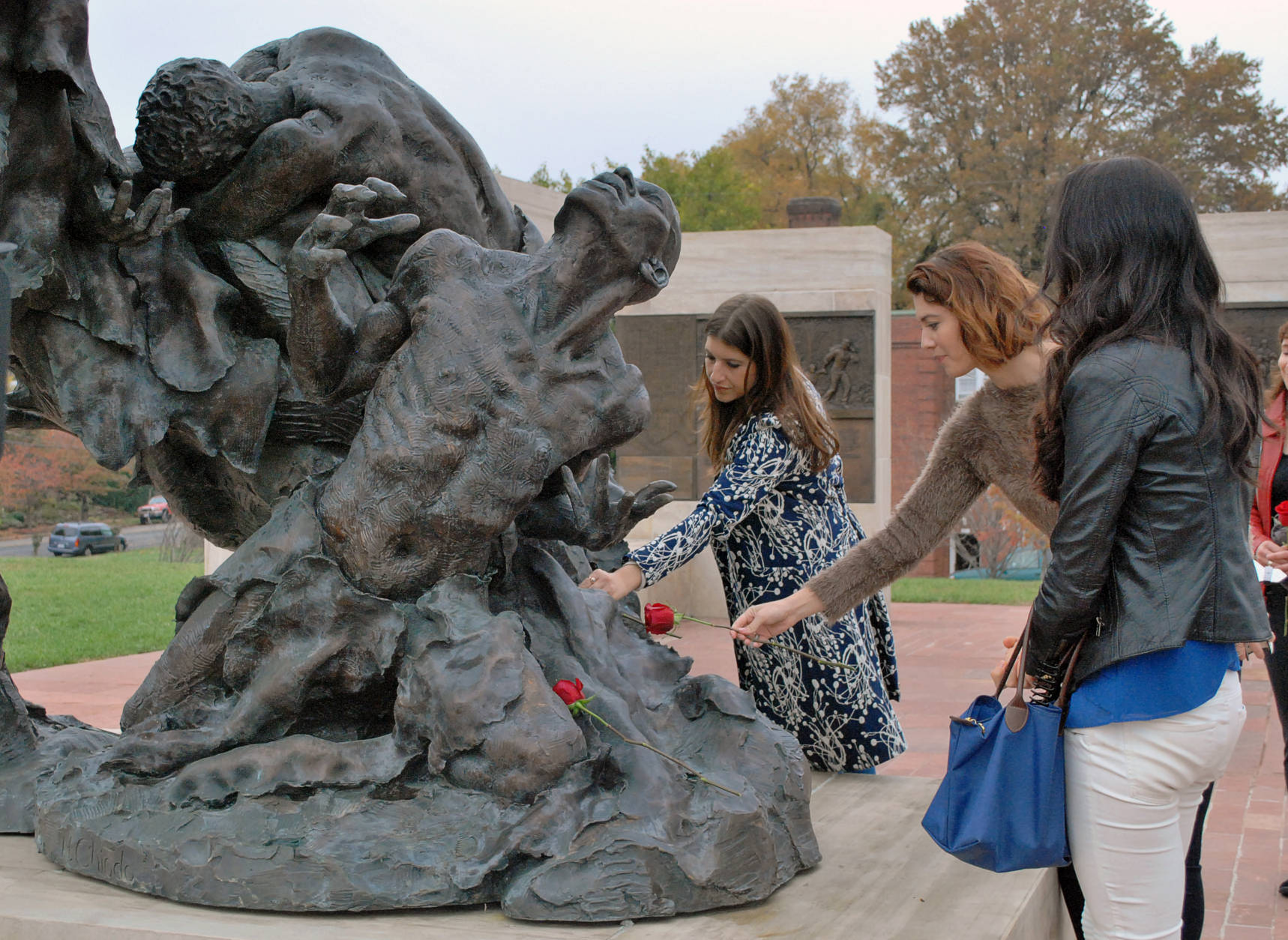
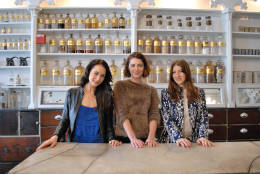
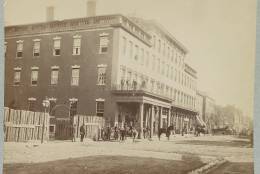
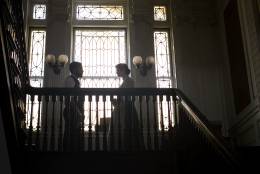
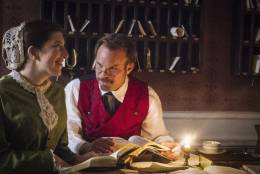
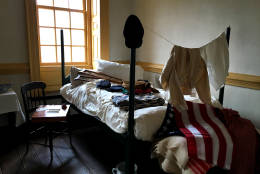
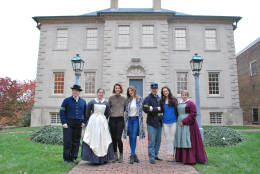
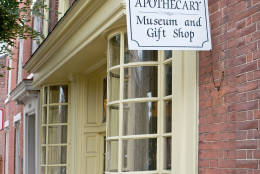
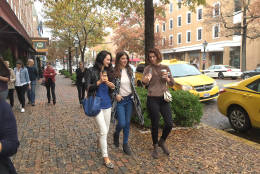

WASHINGTON — On the second floor of a historic home on the corner of Fairfax and Cameron streets in Old Town Alexandria, Susan Hellman delivers some bad news.
“This poor gentleman here is having chloroform; he’s having his hand amputated,” she said.
The head of the gentleman to whom she is referring is covered in a white cloth and his body is cloaked in blue — the uniform of a Union soldier.
Hellman, director of the Carlyle House, is leading a tour through the museum’s “Mercy Street”-inspired exhibit, where rooms and hallways are filled with Civil War-era medicines, objects and photographs from Alexandria’s Mansion House Hospital, which is now the setting for PBS’ hit drama “Mercy Street.”
During the Civil War, the Green family home (now known as the Carlyle House) and adjacent hotel were turned into a hospital to treat wounded soldiers when the city was occupied by the Union Army. The show tells the story of the doctors and nurses who worked there, and the culture and climate of the city at the time.
“Mercy Street’s” popularity gave Visit Alexandria an opportunity to tell the real stories behind the places and the characters that inspired the show. During the first season, the organization and its partners designed several exhibits and tours for fans, including a self-guided walking tour of sites featured on the show and in-depth discussions on topics such as medical heroism.
“Our city was filled with soldiers, civilians, female volunteers, doctors, wounded fighting men from both sides, spies and African-American refugees,” said Claire Mouledoux of Visit Alexandria.
The start of the second season (Jan. 22, 2017) will usher in a whole new lineup of experiences, including events that highlight the food, fashion and formalities of the Civil War era.
Just a few blocks from Carlyle House is the Stabler-Leadbeater Apothecary Museum, another main attraction for “Mercy Street” fans. Everything in the apothecary, which opened in 1792, has been left untouched since its closure in 1933 — including the medicines in the bottles.
The museum’s Lauren Gleason points to an account book from 1861-1862. The record shows that the apothecary sold medicines to the Union Army, which would have been distributed to Mansion House Hospital.
The ledger is part of an archival exhibit currently on display. In January, the apothecary will feature a new exhibit focused on the diseases of the Civil War era and the drugs that were available to treat them.
Medicine isn’t the only storyline on “Mercy Street.” The show also depicts what life was like during the war for African-Americans in Alexandria.
Audrey Davis, director of the Alexandria Black History Museum and official historical consultant for “Mercy Street,” said the show highlights contraband in American history.
“Most people don’t know the term contraband, at least in that context,” she said.
When Alexandria was occupied by the Union Army, slaves came into the city in search of asylum. They could work for the Union, earn a living wage and live independently.
“It’s been estimated that close to 20,000 contraband came through Alexandria during the course of the war,” said Davis, who is also the descendant of a contraband.
Alexandria’s Contrabands and Freedmen Cemetery on South Washington and Church streets is a burial ground for more than 1,700 contraband who came to the city looking for freedom. A register at the cemetery lists the first and last names of all who died.
Of course, you don’t need to be a fan of “Mercy Street” to visit the sites that inspired the show. The organized experiences lend the perfect opportunity to brush up on your Civil War history.
A few “Mercy Street” events planned for 2017:
- Gala in the Garden: A five-course seated dinner with “Mercy Street” producers at Carlyle House, May 20.
- Lecture and book-signing, “Food in the Civil War Era:” Jan. 12 at Lyceum.
- Civil War Wine Dinner with Gray Ghost Winery at the Gadsby’s Tavern Museum & Restaurant, Jan. 26.
- “Before the Spirits are Swept Away,” African American historic site paintings by artist Sherry Z. Sanabria, until May 27.
- “This Terrible Disease” at the Stabler-Leadbeater Apothecary Museum, recurring weekly on Sunday, Tuesday, Wednesday, Thursday, Friday, Saturday until Dec. 31, 2017.
- Fashion Show and Tea on the Terrace at Carlyle House, June 4.

